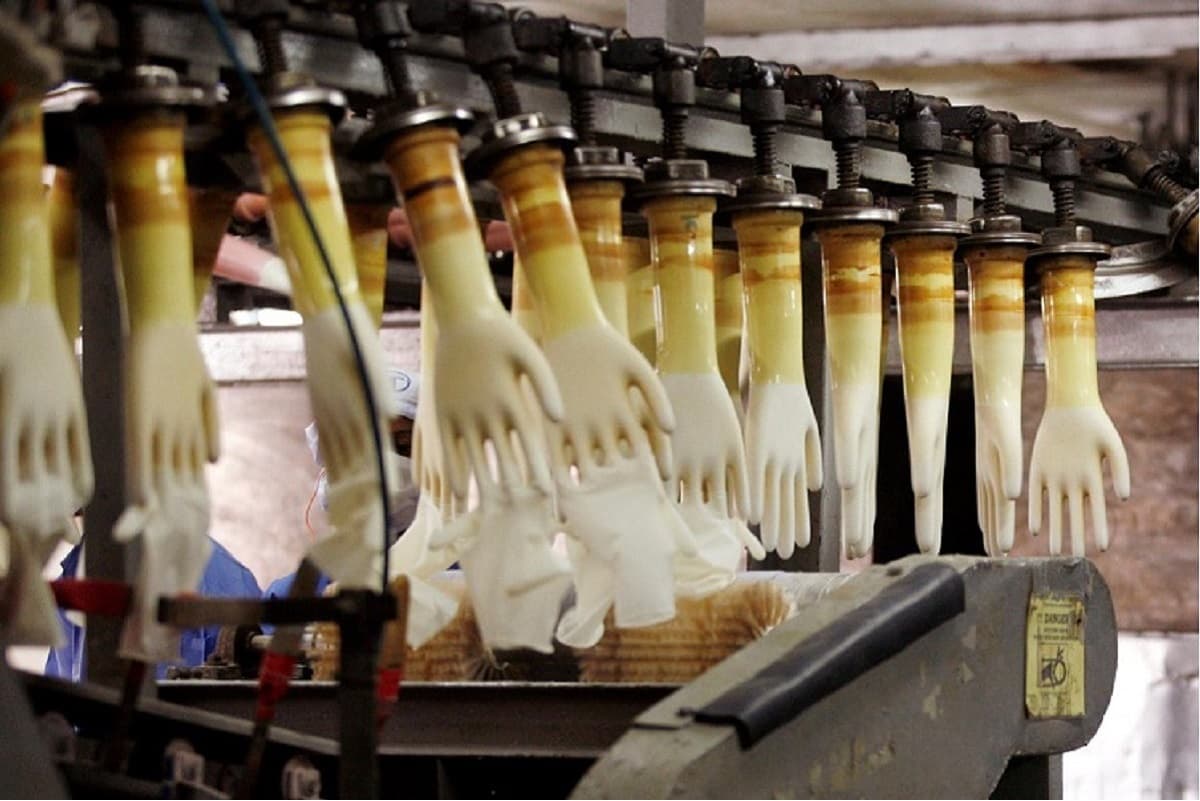
KUALA LUMPUR (Oct 5): Glove counters continue to be among the top gainers in the morning trading session today, amidst the surging demand for rubber gloves as Covid-19 cases keep increasing.
Malaysia just reported a triple-digit number of new infections for four consecutive days. Yesterday, the country recorded 293 new cases, according to the Ministry of Health.
At the time of writing, shares in Supermax Corp Bhd rose 3.9% or 35 sen to RM9.33, bringing its market value to RM23.07 billion. It saw some 14.7 million shares traded.
Supermax warrants also led the top gainers today, including Supermax-C81, which rose 10.55% or 58 sen to RM6.08, Supermax C-80, which gained 5.26% or 58 sen to RM11.60, Supermax C-86, which gained 9.47% or 48 sen to RM5.55, and Supermax C-83, which was up 3.54% or 38 sen to RM11.12.
Kossan Rubber Industries Bhd also rose 2.85% or 46 sen to RM15.08, with a market value of RM18.7 billion.
Careplus Group Bhd was up 4.5% or 15 sen to RM3.48 while Comfort Gloves Bhd rose 2.31% or nine sen to RM3.99.
The world’s largest glove maker, Top Glove Corp Bhd, rose 0.91% or eight sen to RM8.84. Its market capitalisation stood at RM71.26 billion with 20.6 million shares changing hands.
Kenanga Investment Bank Bhd has maintained its ‘overweight’ call on the rubber glove sector, saying that average selling prices (ASPs) are still rising and prospects in the sector are looking bright.
“We highlight that industry ASP for months of September to December is rising monthly by between 10% to 30% indicating supply tightness has further propelled ASP higher,” said its analyst Raymond Choo Ping Khoon in a note today.
He further highlighted that Top Glove’s ASP for the months of September, October or November is higher by 30%, 30% and 15% month-on-month respectively, indicating supply tightness.
“With a diverse customer base, we expect Top Glove to have better pricing power and hence potentially above-average industry prices. We expect a hike in raw material prices due to supply constraints which flows to higher ASPs.
“We do not expect supply to flood the market at least in the first three quarters of 2021 despite growing concern amongst investors that a number of Malaysian listed companies’ have announced new ventures into the gloves manufacturing segment,” he said.
In anticipation of higher demand due to the pandemic, players are raising capacities to meet the surging demand, the analyst said.
“Our analysis suggests that acute supply shortage and supernormal demand could persist over the next two years. Interestingly, players are getting orders for new users that include airlines, restaurants, retail apparel chains and hotel operators. If we look at the capacity expansion numbers in isolation, it looks overwhelming. Juxtaposed against the annual demand growth and new pandemic-led demand, the additional capacity is not a concern,” he said.
He said the research house has ‘outperform’ calls on Hartalega, with a target price (TP) of RM26.22, Kossan (TP: RM17.10), Supermax (TP: RM12.75) and Top Glove (TP: RM10.68).
Kenanga’s top pick for the sector is Hartalega since ASP catchup is expected to be reflected in the third quarter of 2020 onwards implying strong earnings growth.
Overall, the analyst said earnings visibility in the sector looks reasonably good for financial year 2021 (FY21) based on lengthened demand lead times and ASP momentum moving into US$100/1,000 pieces rendering prospective earnings in the sector too good to ignore.
“Although order-books and lead times suggest that FY22 demand will remain strong, while clarity on ASP diminishes, we are sold on the point that rubber glove makers are benefitting immensely from increased demand that is sustainable — a step-up change that is structural out of heightened hygiene awareness that extends beyond the healthcare community.
“On this point alone, we note that there is upside risk to our earnings projection for FY22, as we have reflected conservative assumptions of firstly, that ASP would normalise from US$100/1,000 pieces to US$40/1,000 pieces (on easing of supply bottlenecks) and secondly, lagging costs of production which hitherto has been fairly contained would likely catch up, namely labour (10% of production cost) and raw materials (45% of production cost). In our view, ASP US$40/1,000 pieces implying US$0.04/piece which is reasonably low,” the analyst added.